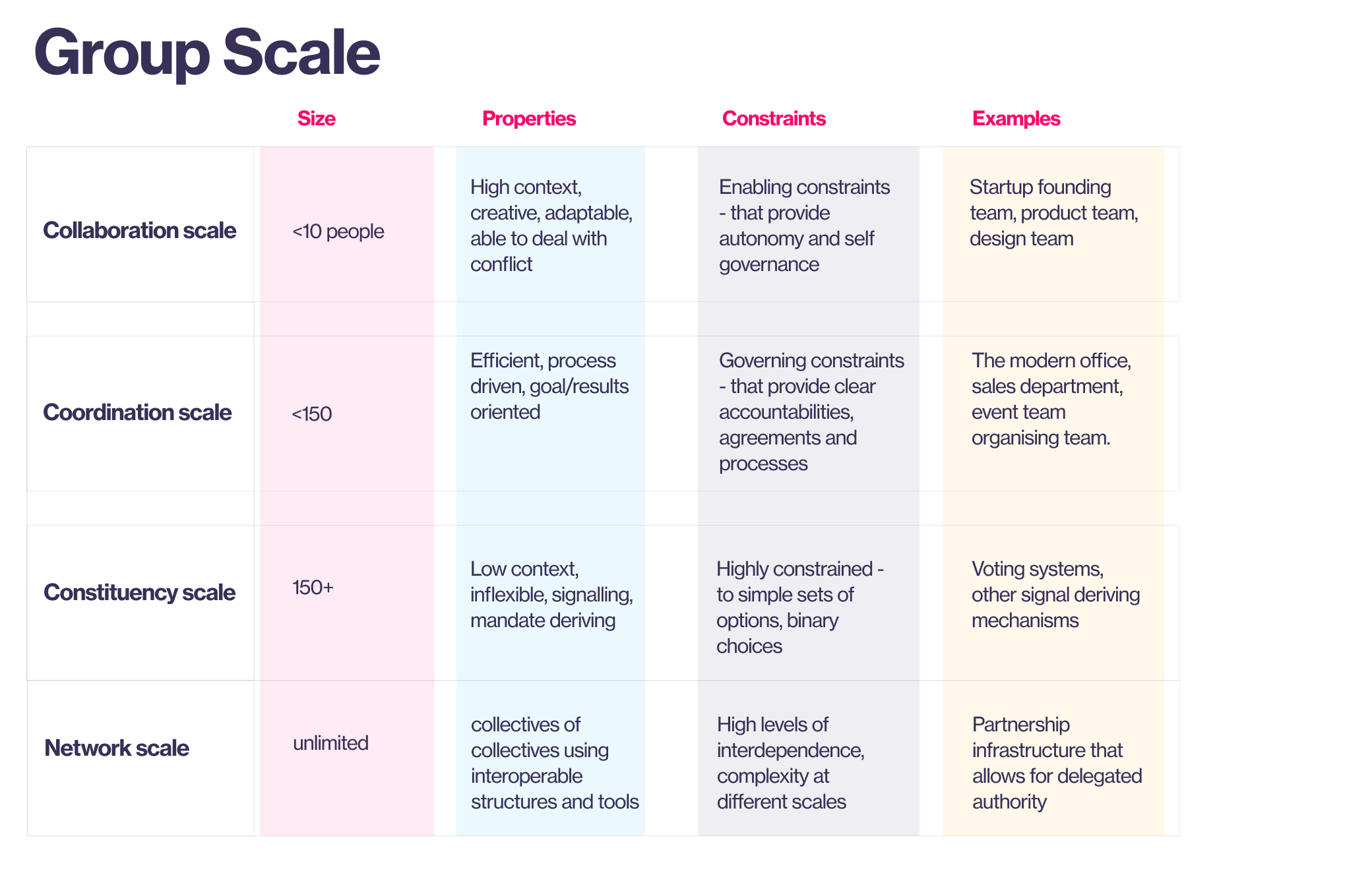Group Scale
Human systems function differently at different scales. Understanding these differences is crucial for designing organizational systems that function effectively, regardless of size. This framework identifies four key scales of group organization, each with its own characteristics, challenges, and best practices:
!group-scale (2).png)
 When creating decentralized networks of autonomous teams, it is important to design for the different group scales that will occur. This way, different groups across a network can operate effectively as separate entities, and also coordinate together effectively to create a collectively intelligent whole.
When creating decentralized networks of autonomous teams, it is important to design for the different group scales that will occur. This way, different groups across a network can operate effectively as separate entities, and also coordinate together effectively to create a collectively intelligent whole.
Collaboration Scale
Collaboration scale represents the smallest and most fundamental level of group organization. It is characterized by direct, face-to-face interaction among a small number of individuals (generally under 10) working together towards a shared goal. Effective collaboration at this scale relies on strong interpersonal relationships, clear communication, and shared understanding.
Coordination Scale
Coordination scale involves multiple teams or smaller groups working together towards a shared goal, requiring more sophisticated coordination mechanisms and communication strategies. This scale typically ranges from 10 to 150 individuals, although this can vary depending on the complexity of the task and the effectiveness of coordination mechanisms.
Constituency Scale
Constituency scale encompasses a large and diverse group of stakeholders who share a common interest or benefit from the organization’s activities. Unlike smaller scales, this scale emphasizes participation, representation, and collective decision-making across a wider community.
Network Scale
Network scale represents the largest and most complex level of group organization, encompassing a system of interconnected organizations or groups (constituencies) working together towards shared or complementary goals. This scale is characterized by high levels of interdependence, complex communication flows, and the need for robust mechanisms for coordination and governance across multiple entities.